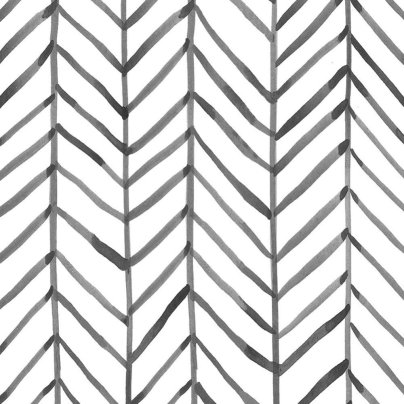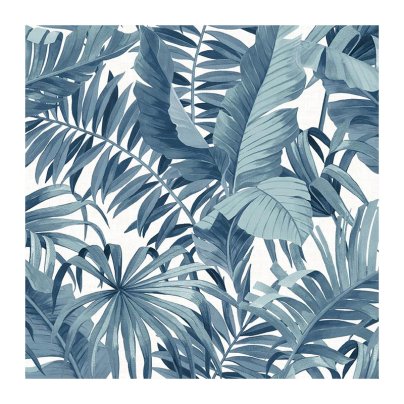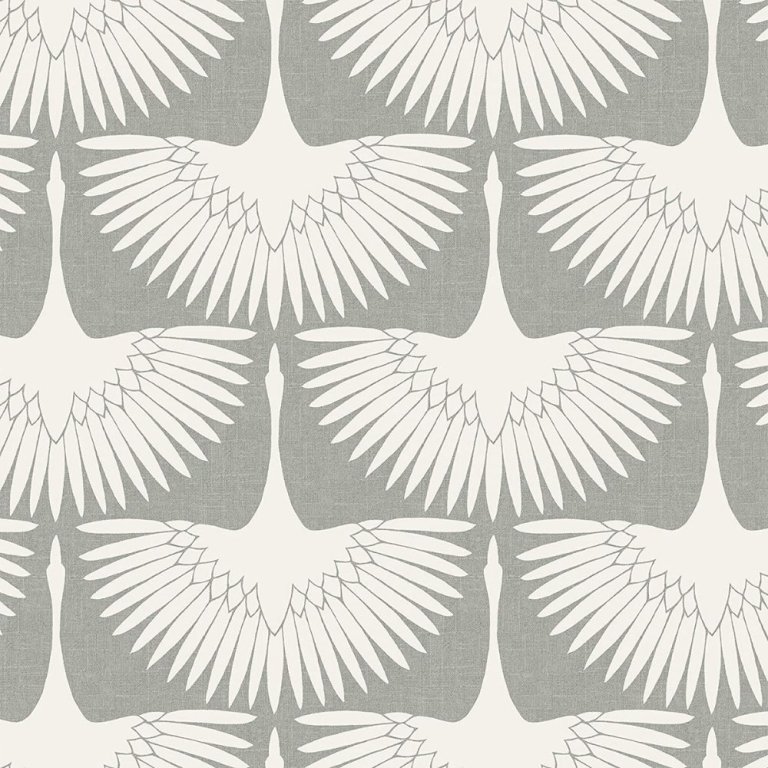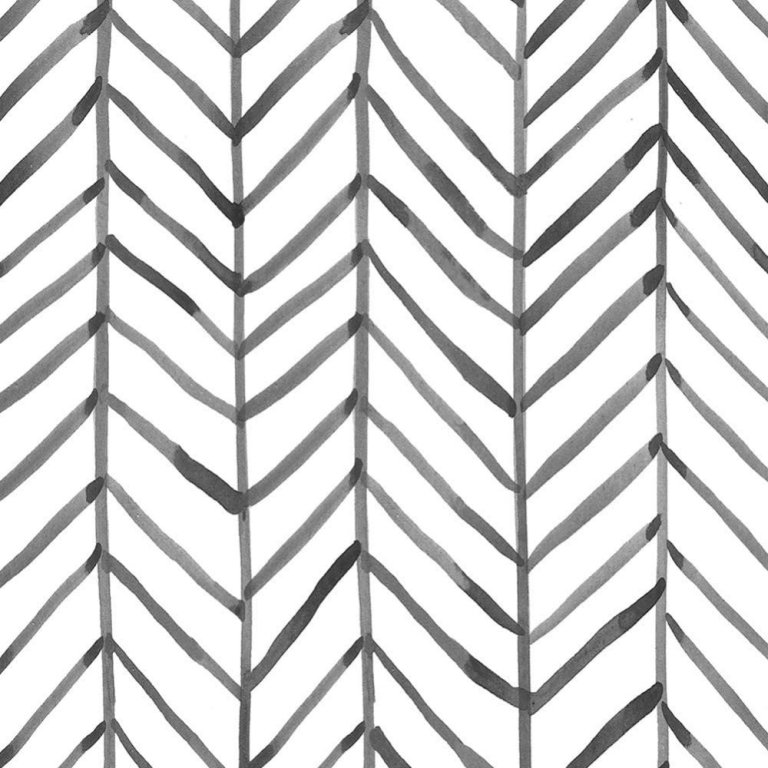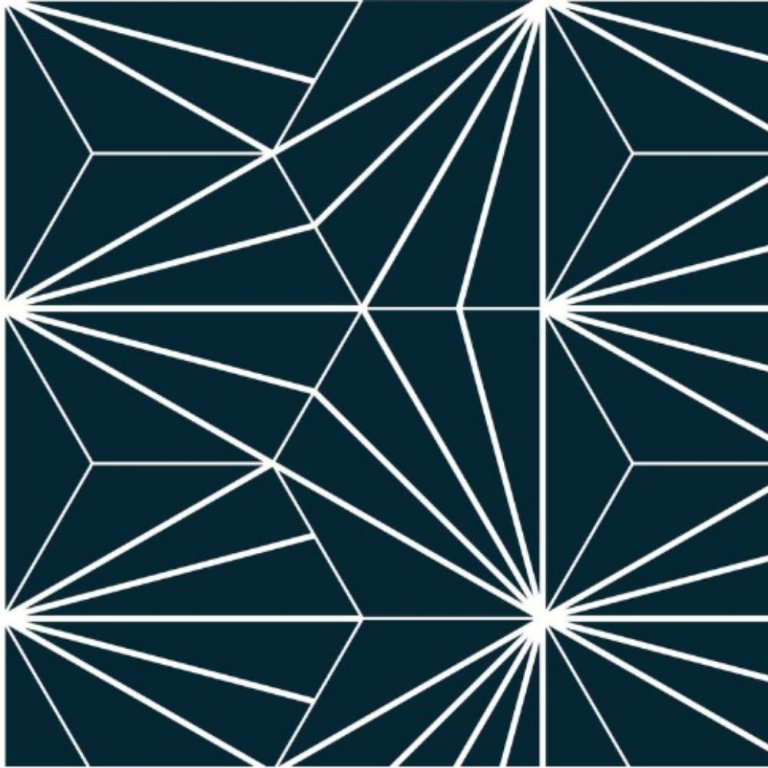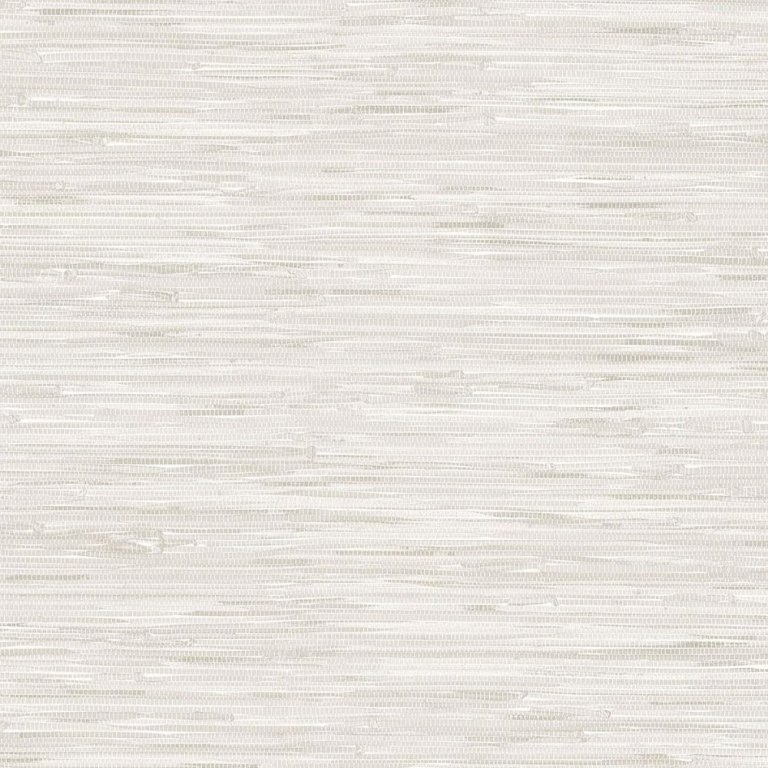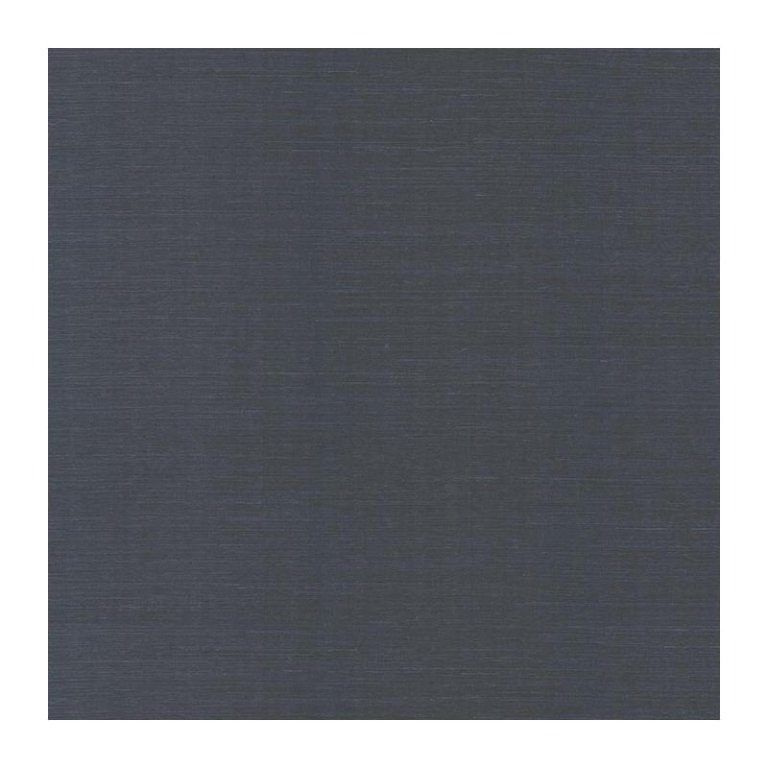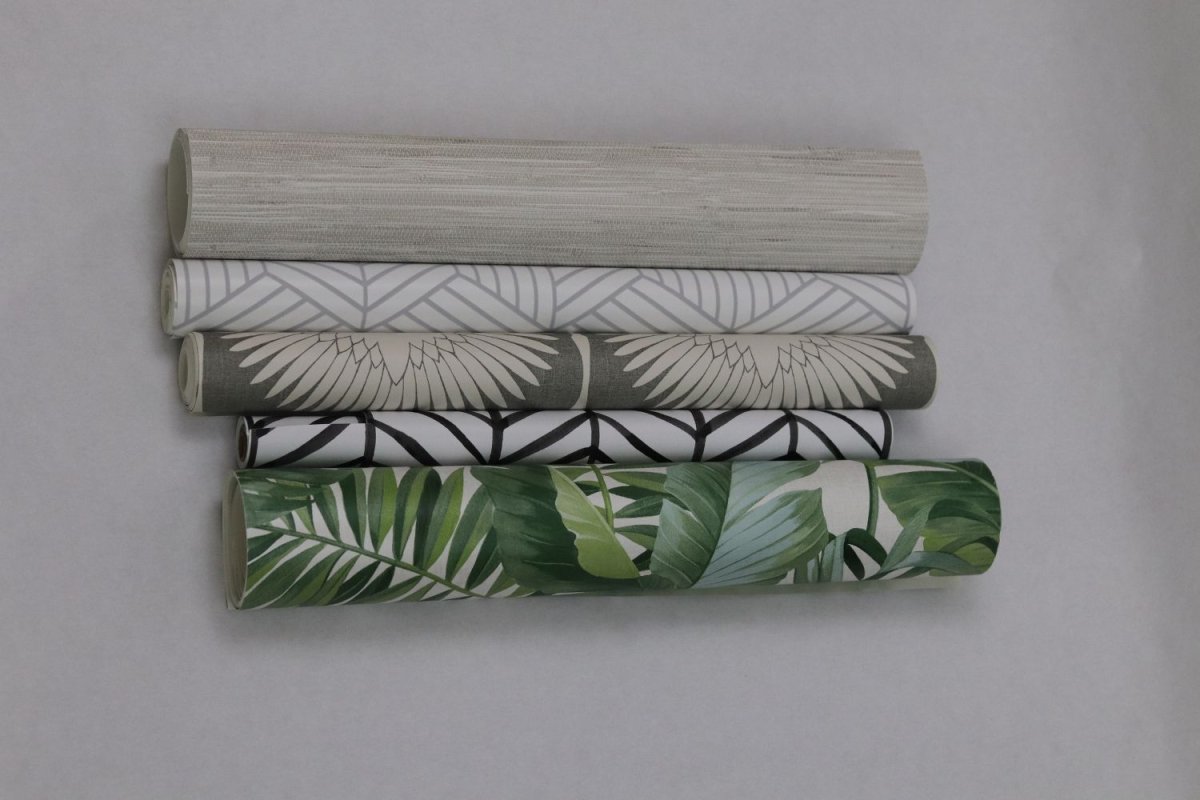
We may earn revenue from the products available on this page and participate in affiliate programs. Learn More ›
Peel-and-stick wallpapers offer an upgrade to a home’s appearance without the mess and long-term commitment of traditional wallpaper. Renters or those who simply want a non-permanent way to switch up a room’s color scheme or style, will find that this type of wallpaper is just as easy to remove as it is to install. Those who have never used it as a wall and ceiling covering before may find it hard to believe that peel-and-stick wallpaper is really as simple and effective as it seems. So we spent several months testing nine popular options—applying, repositioning, and removing them and exposing them to humidity, dirt, and ketchup splatter—to see how they held up.
Once our tests were complete, we chose the Tempaper & Co. Feather Flock Peel-and-Stick Wallpaper as our top pick for its ease of application and removal, appearance, durability, and value. Its self-adhesive backing made it a breeze to hang, and it didn’t leave any residue on our walls when we removed it. Read on to learn more about the rest of the picks that made our list of the best peel-and-stick wallpapers before selecting a few favorites to refresh the rooms in your home.
- BEST OVERALL: Tempaper & Co. Feather Flock Peel-and-Stick Wallpaper
↓ Jump to Review - BEST BANG FOR THE BUCK: HaokHome Herringbone Stripe Peel-and-Stick Wallpaper
↓ Jump to Review - BEST BOTANICAL: WallPops Maui Peel-and-Stick Wallpaper
↓ Jump to Review - BEST FLORAL: Chasing Paper Fine Point Floral Wallpaper
↓ Jump to Review - BEST GEOMETRIC: RoomMates Striped Hexagon Peel-and-Stick Wallpaper
↓ Jump to Review - BEST GRAPHIC: Chasing Paper Starburst Peel-and-Stick Wallpaper
↓ Jump to Review - BEST TEXTURED: WallPops Grassweave Peel-and-Stick Wallpaper
↓ Jump to Review - BEST SISAL: York Wall Coverings Natural Grasscloth Wallpaper
↓ Jump to Review
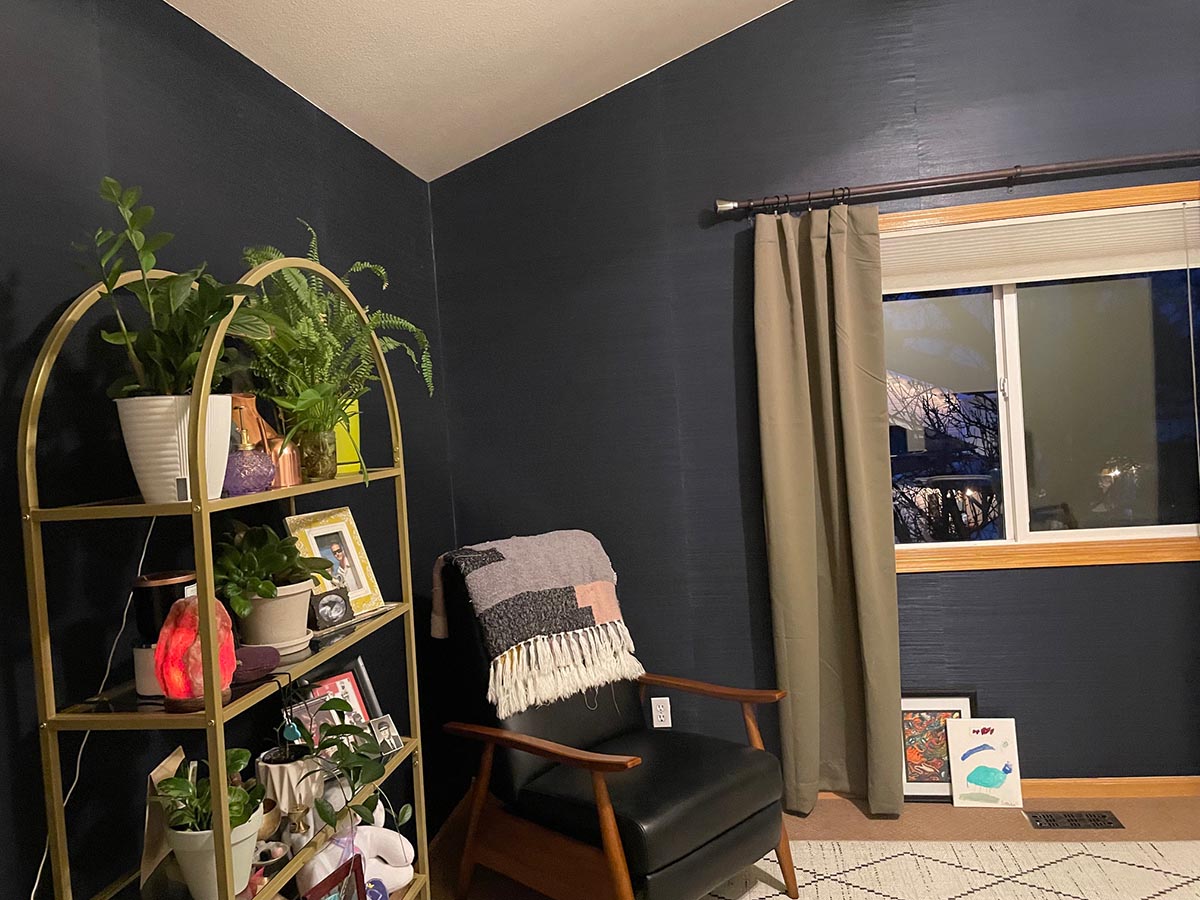
Peel-and-Stick Wallpaper Comparison Chart
| Product Name | Size | Coverage | Colorways |
| Tempaper & Co. Feather Flock Peel-and-Stick Wallpaper | 20.5 inches wide by 16.5 inches long | 28.18 square feet | 5 |
| HaokHome Herringbone Stripe Peel-and-Stick Wallpaper | 17.7 inches wide by 9.83, 19.67, or 32.75 feet long | 14.49, 29.01, or 48.31 square feet | 4 |
| WallPops Maui Peel-and-Stick Wallpaper | 20.5 inches wide by 18 feet long | 30.75 square feet | 2 |
| Chasing Paper Fine Point Floral Wallpaper | 24 inches wide by 4, 8, or 12 feet long | 8, 16, or 24 square feet | 3 |
| RoomMates Striped Hexagon Peel-and-Stick Wallpaper | 20.5 inches wide by 16.5 inches long | 28.18 square feet | 5 |
| Chasing Paper Starburst Peel-and-Stick Wallpaper | 24 inches wide by 4, 8, or 12 feet long | 8, 16, or 24 square feet | 2 |
| WallPops Grassweave Peel-and-Stick Wallpaper | 20.5 inches wide by 18 feet long | 30.75 square feet | 6 |
| York Wall Coverings Natural Grasscloth Wallpaper | 36 inches wide by 18 feet long | 54 square feet | 8 |
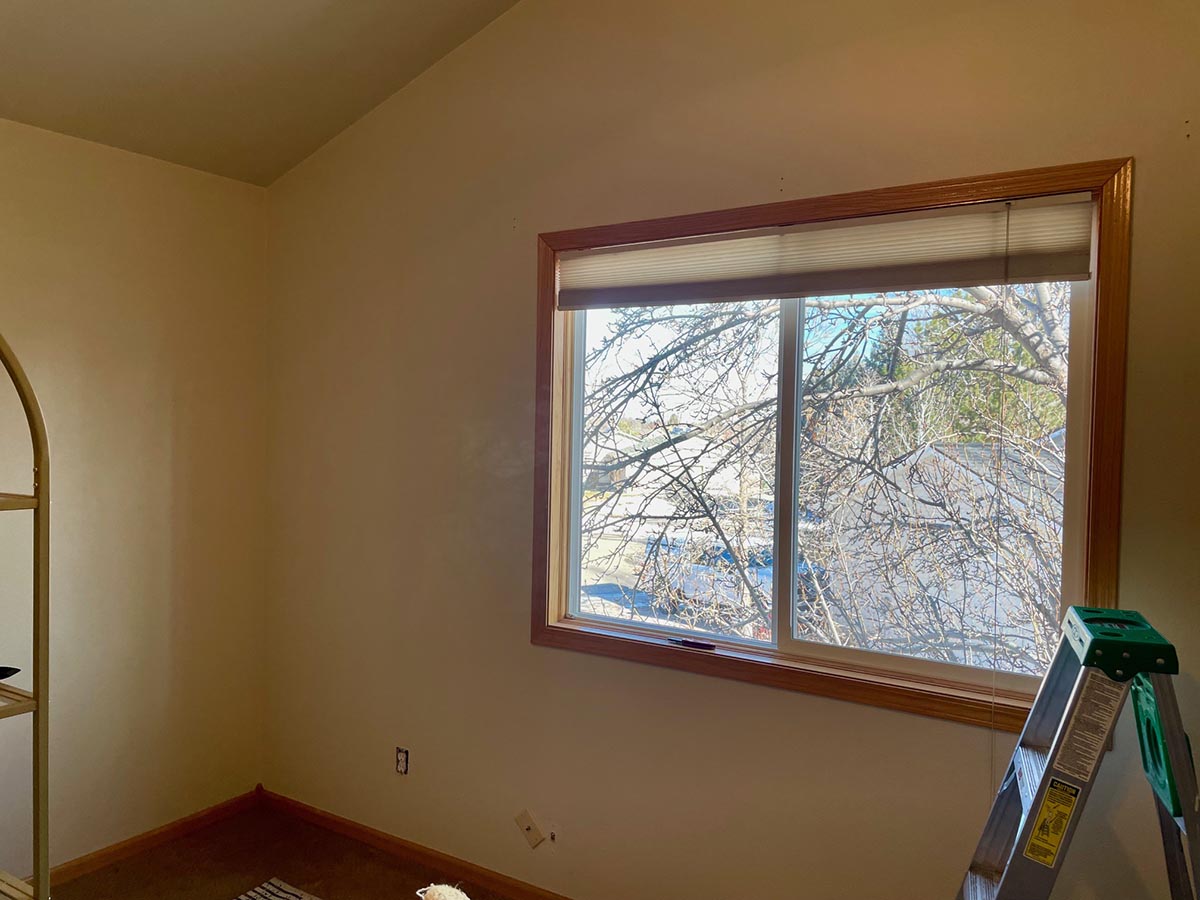
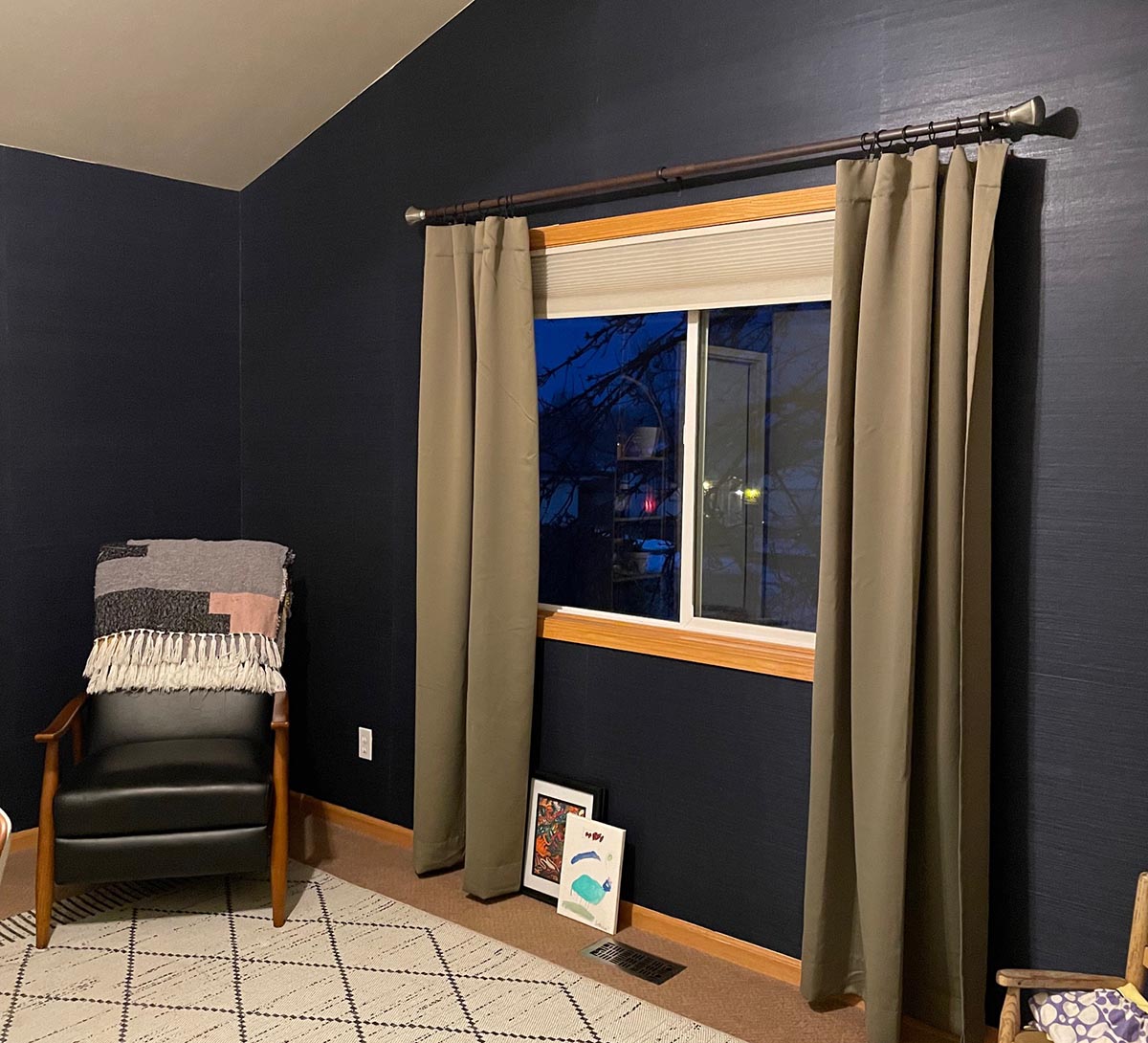
Our Top Picks
The best peel-and-stick wallpapers feature attractive designs and are easy to apply and remove without leaving a mess. Each of the following self-adhesive wallpaper products performed well in our tests and is available in multiple colors to suit any decorative style.
Best Overall
Tempaper & Co. Feather Flock Peel-and-Stick Wallpaper
What We Like
- Wipes clean without affecting color or print
- Repositioning doesn’t pull paint off wall
- Nontoxic glue, phthalate- and VOC-free ink
- Withstands moisture when used in bathrooms
What We Don’t Like
- Stiff paper is a bit hard to manage during installation
Specs
- Size: 20.5 inches wide by 16.5 feet long
- Coverage: 28.18 square feet
- Colorways: 5
Our Ratings: Application 5/5; Appearance 5/5; Durability 5/5; Removal 4/5; Value 5/5
The Feather Flock peel-and-stick wallpaper from Tempaper features a modern and elegant bird design that comes in five colors to coordinate with a variety of spaces, including everything from walls and furniture to bookcases and stair risers. Made in the United States with nontoxic glue and water-based ink, it is phthalate- and VOC-free, making it a safe choice for any space. In our tests, we found it incredibly easy to apply and reposition and were impressed to see that it held up to the moisture and humidity in a frequently used bathroom without peeling or bubbling.
Our top pick is also easy to clean, showing no signs of damage after having ketchup smeared on it, left to dry, and wiped away. Because the paper is of such high quality, however, it is a little thick, which sometimes made it difficult to manage during installation. The thickness of self-sticking washable wallpaper means it also weighs a bit more than other options, and holding a full panel while lining up the pattern can be a bit tiring. Still, the fact that it comes in rolls 20.5 inches wide by 16.5 feet long means users can cover walls relatively quickly once they get their system down.
What our tester says: “This was the easiest wallpaper to remove and reapply of all the brands we tested, which was particularly helpful so we could line up the pattern. It also has a nice heavy feel to it and doesn’t stretch as you work with it.” —Stacey L. Nash, Product Reviews tester and writer
Get the Tempaper peel-and-stick wallpaper at Amazon, Lowe’s, The Home Depot, Walmart, Target, or Tempaper & Co.
Best Bang for the Buck
HaokHome Herringbone Stripe Peel-and-Stick Wallpaper
What We Like
- Affordable peel-and-stick wallpaper
- Waterproof design doesn’t bubble or peel in humidity
- Grid on paper backing makes cutting easy
What We Don’t Like
- Tiny instructions are difficult to read
Specs
- Size: 17.7 inches wide by 9.83, 19.67, or 32.75 feet long
- Coverage: 14.49, 29.01, or 48.31 square feet
- Colorways: 4
Our Ratings: Application 4.7/5; Appearance 5/5; Durability 4.5/5; Removal 5/5; Value 5/5
HaokHome’s affordable vinyl wallpaper is easy to apply to any smooth surface in the home, from shelves and drawers to walls and cabinets. The pattern does require some work to match correctly, but the hand-drawn feel of the design means it doesn’t have to be perfect. The vinyl held up well in a humid bathroom, and it passed our ketchup test, wiping clean after the stain sat for 30 minutes.
Simple to apply or remove, this modern striped paper is available in panels measuring 17.7 inches wide by 9.8, 19.67, or 32.75 feet long. The backing has a grid printed on it, which makes cutting simple and precise. This wallpaper was also one of the easiest to remove after it had been on the wall for several days. As long as we were gentle, it didn’t leave residue or tear the drywall surface.
The herringbone design is available in four colors and repeats every 24.4 inches high and 17.7 inches wide. The manufacturer suggests buying enough wallpaper at the outset of your project to avoid color differences between batches. Our only issue with the HaokHome wallpaper is the tiny instructions, which require strong readers or a magnifying glass to read.
Get the HaokHome peel-and-stick wallpaper at Amazon or HaokHome.
Best Botanical
WallPops Maui Peel-and-Stick Wallpaper
What We Like
- Cleans easily and well
- Leaves a clean wall if it’s peeled gently around the corners
- Easy to reposition
What We Don’t Like
- Not a great wallpaper for textured walls
Specs
- Size: 20.5 inches wide by 18 feet long
- Coverage: 30.75 square feet
- Colorways: 2
Our Ratings: Application 5/5; Appearance 4.5/5; Durability 5/5; Removal 5/5; Value 5/5
This renter-friendly wallpaper is perfect for an accent wall or basement tiki bar. Its botanical aesthetic offers a bold design and comes in two colors that retain their vibrancy even after being stained with ketchup and wiped with a wet cloth. It comes in rolls 20.5 inches wide by 18 feet long, providing about 30.75 square feet of coverage. We found it easy to apply with the help of a wallpaper-smoothing tool, so long as we were installing it on a smooth, flat surface.
This pick is also incredibly easy to reposition. Its adhesive stayed strong and sticky as we repeatedly peeled it off and stuck it back up to line up the pattern. After 7 days, we gently pulled it off the drywall without causing damage, though we did have to be especially careful around the corners. Though the manufacturer says it’s best for low-moisture areas, it didn’t peel or bubble when installed in a steamy bathroom for 3 days. However, we still suggest following the manufacturer’s instructions.
Get the WallPops Maui peel-and-stick wallpaper at Amazon, Target, Walmart, or WallPops.
Best Floral
Chasing Paper Fine Point Floral Wallpaper
What We Like
- GreenGuard-certified latex ink; free of VOCs
- Stain resistant and has a strong adhesive
- Comes in 3 beautiful, bright colors
What We Don’t Like
- Pricier than other options
- Strong adhesive may pull off some paint
Specs
- Size: 24 inches wide by 4, 8, or 12 feet long
- Coverage: 8, 16, or 24 square feet
- Colorways: 3
Our Ratings: Application 5/5; Appearance 5/5; Durability 5/5; Removal 4/5; Value 4.5/5
This self-adhesive poly-woven paper was designed by Ampersand Design Studio in collaboration with Chasing Paper. Available in panels that are 2 feet wide with lengths of 4, 8, or 12 feet, its repeating 24-inch pattern creates a bold, whimsical aesthetic. It comes in three color options, including everything from deep, rich dark tones to light and bright pastels.
Applying this temporary wallpaper was easy thanks to the detailed downloadable application instructions on the company’s website, which help clarify how to get the panels lined up correctly. Its strong adhesive made it easy to reposition, but removal might be a bit tricky if left up for an extended period. Even when we were gentle, this pick removed a little drywall surface during removal. Still, it cleaned up well after our ketchup test and had no problem staying put in a humid environment. Beyond aesthetics and durability, this wallpaper gets extra credit for its GreenGuard-certified latex inks, VOC-free composition, and matte finish that resists fading.
Get the Chasing Paper Fine Point Floral peel-and-stick wallpaper at Chasing Paper.
Best Geometric
RoomMates Striped Hexagon Peel-and-Stick Wallpaper
What We Like
- Removes without leaving marks or residue
- Easy to clean
- Child-friendly and nontoxic
What We Don’t Like
- Difficult to match pattern across panels
- Can show marks from using a smoothing tool during
Specs
- Size: 20.5 inches wide by 16.5 feet long
- Coverage: 28.18 square feet
- Colorways: 5
Our Ratings: Application 4.7/5; Appearance 5/5; Durability 4/5; Removal 5/5; Value 4/5
Thanks to its proprietary adhesive, this RoomMates peel-and-stick wallpaper is easy to apply and remove without leaving any sticky residue behind. Even leaving it up for 7 days, we were still able to peel it back and reposition it with only one small spot near a corner showing any evidence of its existence on our wall.
This hexagonal-patterned wallpaper comes in rolls of 20.5 inches by 16.5 feet, covering 28.18 square feet with a pattern that repeats every 10.25 inches. We did find that matching up the pattern took a bit of patience as well as extra lengths of wallpaper, which made installation a bit challenging. Also be careful when using a wallpaper-smoothing tool during application, as we saw a few scrape marks from the smoothing tool across the wallpaper’s gray stripes. They’re light enough not to be noticeable from afar, but up close, you could see we’d marred the pattern in a couple of places.
We love that this pick is made in the United States and is compliant with the Consumer Product Safety Improvement Act (CPSIA), ensuring it’s nontoxic and free of harmful chemicals. The washable, water-resistant vinyl is easy to clean and won’t bubble or peel if installed in a humid space.
Get the RoomMates peel-and-stick wallpaper at Amazon or RoomMatesDecor.
Best Graphic
Chasing Paper Starburst Peel-and-Stick Wallpaper
What We Like
- Fade- and stain-resistant with deep, rich color choices
- Free of VOCs, PVC, and phthalates
- GreenGuard-certified latex ink
What We Don’t Like
- Strong adhesive might pull off a little paint during removal
- Can show marks from using a smoothing tool during
Specs
- Size: 24 inches wide by 4, 8, or 12 feet long
- Coverage: 8, 16, or 24 square feet
- Colorways: 2
Our Ratings: Application 5/5; Appearance 5/5; Durability 5/5; Removal 4/5; Value 4.5/5
The bold lines and deep colorways of Chasing Paper’s Starburst pattern peel-and-stick make it a striking choice for an accent wall or powder room. Made in the United States from self-adhesive poly-woven fabric, this pick is fade- and stain-resistant, washable, and free of VOCs, PVC, and phthalates. It’s also printed with GreenGuard-certified latex ink that is water-based, nontoxic, and available in dark blue or black.
This patterned paper comes in 2-foot-wide panels with lengths of 4, 8, or 12 feet. While we only tested an 8-inch by 9-inch sample, it was easy to see that the rich, deep color provides a luxurious, expensive feel. After our ketchup test, the wallpaper retained its beauty, showing no signs of being rubbed with a damp cloth, which can sometimes leave a shiny spot. Its durability was also apparent when we tried to remove it, as the strong adhesive wanted to pull some paint after being left up for a week. However, this wasn’t an issue when repositioning during our initial installation. Yes, this pick is on the pricier side, but we think it would be worth the splurge for the right project.
Get the Chasing Paper Starburst peel-and-stick wallpaper at Chasing Paper.
Best Textured
WallPops Grassweave Peel-and-Stick Wallpaper
What We Like
- Textured look of grasscloth
- Durable and washable
- Quick and easy removal and repositioning
What We Don’t Like
- Some reports of weak adhesive, though this wasn’t our experience
Specs
- Size: 20.5 inches wide by 18 feet long
- Coverage: 30.75 square feet
- Colorways: 7
Our Ratings: Application 5/5; Appearance 5/5; Durability 5/5; Removal 4/5; Value 5/5
This gorgeous grassweave paper comes in six shades to suit a variety of tastes. Though it’s made of durable and washable nylon, its texture adds a natural feel to any smooth wall it’s applied to. The strong adhesive kept it in place in our tests, yet we still found this option easy to reposition as needed during installation. When we took it down, we noticed a small amount of drywall tearing around one corner, but the wallpaper came off cleanly overall and didn’t leave any sticky residue on the wall.
Though we loved the look of this grassweave wallpaper, we were initially a bit concerned about how well its textured surface would clean. However, it handled our stain test beautifully, and the ketchup wiped away easily without getting trapped in the texture. We also appreciate that this pick comes in rolls that are 18 feet long, making it a relatively economical way to update even large rooms.
Get the WallPops Grassweave peel-and-stick wallpaper at Amazon, The Home Depot, Target, or WallPops.
Best Sisal
York Wall Coverings Natural Grasscloth Wallpaper
What We Like
- Genuine sisal grasscloth
- Wider and longer rolls than other tested options
- Available in 8 gorgeous colors
- Does not damage paint or drywall
What We Don’t Like
- Texture doesn’t line up from panel to panel
- Doesn’t stick uniformly to textured walls
Specs
- Size: 36 inches wide by 18 feet long
- Coverage: 54 square feet
- Colorways: 8
Our Ratings: Application 4.7/5; Appearance 4.75/5; Durability 5/5; Removal 5/5; Value 4.75/5
Like our previous pick, this York Wall Coverings paper features a grassweave texture that adds a comforting organic feel to a room without committing to a permanent installation. However, this is the first peel-and-stick version made from natural sisal fiber rather than vinyl, which amplifies the cozy, luxurious atmosphere it lends to a room.
Available in eight colors, including neutral white, warm grey, pine, and black, this gorgeous natural grasscloth suits a variety of styles. We chose navy for our space, and after a weekend of DIY installation, we think the transformation is pretty remarkable. Without applying a hard-to-cover shade of paint or dealing with messy adhesives, we achieved a dramatic, modern look that will be easy to eliminate when it’s time for us to move.
Because this delicately woven wallcovering uses a no-repeat random pattern, the texture on one panel won’t align with the one on the next. While these subtle variations are noticeable up close, they blend seamlessly from a distance. The adhesive also allows for easy repositioning without damaging paint or drywall, so you can take your time creating just the look you want. This quality paper is rather thick and heavy, though, so you will want a sharp blade to get clean cuts. Also, it’s not made for textured walls. We took our chances by installing it on lightly textured ones, but there are a few spots where adhesion is a little less secure.
What our tester says: “As a renter, the only way to make a dramatic change to the white walls in my work-from-home office was using peel-and-stick wallpaper—but I was nervous about doing anything that might end up causing damage. After covering two full walls in the navy color of this gorgeous grasscloth (which involved repositioning each panel numerous times to ensure my installation was as good as possible), I now have a much more aesthetically pleasing place to work. I also feel confident I’ll be able to peel the paper off when we move without pulling anything extra off with it.” —Michelle Larson, Product Reviews tester and writer
Get the York Wall Coverings peel-and-stick at Amazon, The Home Depot, or York Wall Coverings.
Jump to Our Top Picks
How We Tested the Best Peel-and-Stick Wallpapers
| Testing Stats | |
|---|---|
| Products tested | 9 |
| Time spent testing | Several months |
| Tests performed | 7 |
| Price range | $6 to $200 per roll |
Each product on our list of the best peel-and-stick wallpapers went through a series of tests to earn its award. We applied them all according to the manufacturer’s instructions, sticking some to a 2-foot by 2-foot piece of unpainted drywall and fully installing others to painted and textured walls in our homes.
During installation, we repositioned each piece multiple times to see how well the adhesive could retain its strength without causing damage. We also exposed them to a range of environmental conditions to test their durability in the real world, including direct sunlight, high humidity, and cold temperatures. We smeared them with ketchup, waited, and cleaned them to see if the products that claimed to be washable truly were and if the textured ones would catch residue in their uneven surfaces. After a week, we removed sections of the wallpaper to measure how much (if any) paint or wall came away with them. A few of our large-scale installations remain hanging in our homes today.
What to Consider When Choosing Peel-and-Stick Wallpaper
No matter how unique your design preferences, there is an easy-to-remove wallpaper that’s sure to suit them. To apply peel-and-stick wallpaper that can be left up until a lease ends or the home sells, it’s smart to start by learning more about these products. Consider everything from color and pattern to washability, moisture resistance, and overall environmental impact before selecting the one (or more!) you want.
Type
- Rolls: Like traditional wallpaper, many removable wallpapers are sold in rolls. While the fact that they’re printed in large quantities may make them less expensive, it’s still a good idea to measure your room carefully to avoid buying too much.
- Panels: Some peel-and-stick wall coverings come as panels meant to be hung side by side. A standard-size panel measures about 2 feet wide by 4, 8, or 12 feet long. Being able to purchase just one or two panels at a time is a good way to cover a small area or add an affordable accent wall color.
- Mural rolls: Mural peel-and-stick wallpaper comes in one large piece or a group of panels that, when hung together, create a single large image or scene. Some companies even print custom-size murals for shoppers.
- Custom peel-and-stick: Creative DIYers may want to try their hand at custom wallpaper, which allows you to use your own photos, images, or text to create personalized peel-and-stick paper.
Washability
Cleaning wallpaper can be as simple as wiping it with a damp cloth or even dusting it gently. Many affordable peel-and-stick options are made of vinyl, which is easy to wipe clean and can also be scrubbed without causing damage.
Woven polyester and grasscloth wallpapers may not be washable but can be maintained with light dusting or vacuuming. It’s a good idea to check with the manufacturer with any questions about how to clean wallpaper to avoid accidentally damaging the color or pattern.
Moisture Resistance
One of the biggest worries people tend to have about peel-and-stick wallpaper is that it could peel off prematurely. This is certainly possible, especially if it’s installed in a high-moisture environment. This can make hanging wallpaper in the bathroom particularly tricky. Since traditional cellulose-based wallpaper isn’t made to fend off water, moisture may seep through and damage the paper or even cause mold to build up. If you’re looking to decorate a high-humidity space with peel-and-stick wallpaper, seek out an option specifically described as water-resistant. Generally speaking, vinyl wallpaper will be the most resilient in areas that may get wet.
Fire Resistance
There are advantages and disadvantages to fire retardants in wallpapers. Wallpaper is inherently flammable due to its makeup, so the obvious benefit of retardants is extra protection against the spread of house fires. However, some chemicals used in the fire-retardant coating are toxic. For example, traditional brominated flame retardants (BFRs) have harmful effects on human health. Newer products may use intumescent flame retardant, which is considered less harmful and more eco-friendly. Products labeled with a GreenGuard certification indicate lower chemical emissions.
Environmental Impact
Some removable wallpaper can be reused after removal, making it more eco-friendly than traditional wall coverings. Many peel-and-stick wallpaper manufacturers have also taken additional measures to lower their environmental impact, including using natural water-based inks and sustainable materials.
Wallpaper may emit toxic chemicals into your home. While vinyl papers are conveniently washable, they are made with a plastic chemical called PVC (polyvinyl chloride) that emits volatile organic compounds (VOCs) that reduce air quality. Shoppers concerned about indoor air quality may want to consider products with a GreenGuard certification, which, as mentioned above, indicates the use of eco-friendly materials and low chemical emissions.
Texture
Textured peel-and-stick wallpaper with a natural weave or damask pattern can add dimension and drama to a space. For decorators who want to create this look without the hassle of installing permanent wallpaper, peel-and-stick selections that look like brick, shiplap, velvet, or grasscloth might do the job. While some of these selections only look textured but are actually smooth to the touch, others have an actual raised pattern.
Aesthetic
Wallpaper adds whimsy, texture, and color to bland spaces. Peel-and-stick options provide the perfect opportunity for a low-commitment, high-impact home update. Available in many different patterns and colors to suit both modern and traditional tastes, popular wallpaper designs include floral, retro, graphic, geometric, and tropical patterns. Larger patterns and murals will work well on an accent wall, while more subtle designs such as grasscloth can lend a sophisticated, finished look to a space.
For an unexpected design twist, try wallpapering the ceiling, furniture, or other smooth surfaces. When considering color choice, shoppers may choose to match their current decor or use contrasting shades to create a bold focal point.
FAQs
Now that you know what to look for while shopping for the best peel-and-stick wallpaper, you may be wondering how long the new wall covering will last or how to prepare the walls before applying it. Below, get the answers to these and other commonly asked questions about removable wallpaper.
The longevity of peel-and-stick wallpaper will depend on the quality of the product and the application. If both are high, it may last years. However, since the adhesive is not as strong as paste, removable wallpaper is not as permanent as the traditional kind.
To prepare walls for peel-and-stick paper, wipe off dust and dirt using a damp cloth and a mild cleaner. Then, allow the surface to dry completely before beginning installation. If you want to put wallpaper on textured walls, you may also need to sand or scrape them to ensure proper adhesion.
The required amount of wallpaper depends on the project. To calculate the quantity, measure the width of the wall and then divide that by the width of the panels or roll. To find the total square footage, measure the height of the space and multiply that by the width. When ordering wallpaper with a pattern, order extra to ensure that there’s enough to line everything up.
It depends. If the old wallpaper is made of vinyl or has a moisture-resistant coating, the new peel-and-stick might not adhere properly. Try a preliminary test in an inconspicuous area to see if it will stay or use a wallpaper remover to get down to bare walls first.
Vinyl peel-and-stick wallpaper tends to be moisture resistant and easy to clean but less environmentally friendly. It may also emit VOCs that negatively impact the home’s air quality. Wallpapers made from natural fibers or polyester may be healthier, though they may not be ideal in humid environments or places exposed to dirt and messes.
While it’s technically possible to apply wallpaper alone, the process will likely be much easier with two people. Adding wallpaper to the full height of a wall or matching a pattern across panels are definitely two-person jobs.
Virtually any flat surface is fair game for peel-and-stick. It’s a good way to add an accent wall in an office, increase drama in a powder room, or create coziness in a reading nook.Lining the back of shelves can add a pop of color, as can covering the sides of drawers or an inset in a cabinet door. Peel-and-stick wallpaper is an excellent way to update any space without the permanence of paint or traditional papers.
Meet the Tester
Michelle Larson has been a writer and editor for more than 10 years, and she loves working on those tasks significantly more than she loves hanging wallpaper. Still, she hung her first strip well before she became a teenager, so she knows how to measure, position, and smooth with the best of them.
Stacey L. Nash has written about home and garden products, home design and decor, and home improvement for more than 5 years. She’s passionate about research and hands-on testing to find the products that add true value to homeownership and daily life.
Additional research provided by Kristin Mosier.

